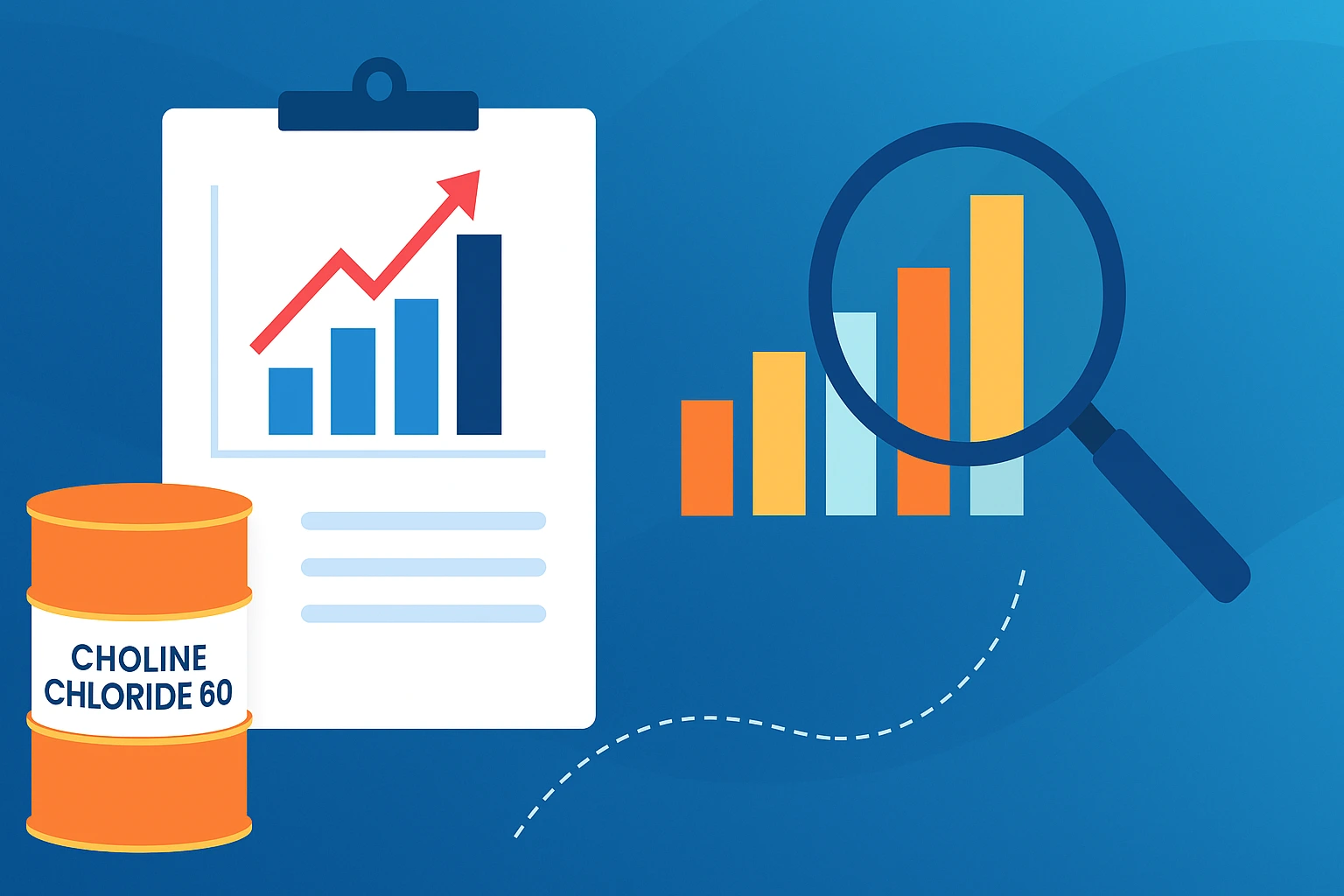1. Introduction: Choline Chloride 60 and Its Role in Feed
Choline chloride 60, a highly effective methyl donor and lipotropic agent, is a mainstay in animal nutrition for poultry, swine, ruminants, and pet food. It supports liver health, boosts growth, and improves feed conversion rates. As the market faces feed cost pressures and evolving regulations, buyers weigh the proven benefits of choline chloride against a growing array of “natural” and alternative additives.
2. The Market Landscape for Choline Chloride 60 in 2025
In 2025, the global choline chloride market is projected at over $600M with a ~6% CAGR, led by demand in animal feed (especially Asia-Pacific, holding over 40% market share). Powdered and liquid forms dominate feed applications—favored for cost-effectiveness and shelf life. Innovations, such as microencapsulation and bio-based production, are addressing sustainability and efficiency, while price volatility in raw materials (ethylene oxide, trimethylamine) and strict feed regulations pose ongoing challenges. The sector remains highly competitive, with major suppliers investing in new tech and quality assurance.
3. Market-Proven Alternatives: Betaine, Herbal Choline, and More
Alternatives to choline chloride 60 include:
-
Betaine hydrochloride: Used in poultry/livestock for methylation and osmoregulation. Performance is generally comparable, but cost and inclusion rates differ.
-
Herbal/polyherbal choline: These blends (often derived from plants like soybean, wheat, or lecithin) offer a “natural” label and sometimes enhanced gut health or antioxidant benefits. Recent trials in piglets and broilers show similar growth and economic outcomes vs. choline chloride, though dose and product quality are critical.
-
Chicken liver powder: Used in synergy with choline chloride to improve palatability and feed performance in premium pet food.
4. Efficacy, Economics, and Feed Performance: Science Speaks
Scientific reviews confirm that choline chloride supplementation increases growth rate, feed intake, and return on investment in livestock vs. non-supplemented controls. Herbal choline sources, polyherbal blends, and betaine can match choline chloride for many production markers—sometimes with additional immune or health benefits—but also bring higher costs-per-kg or require larger inclusion rates. Market data for 2025 reveal that while alternatives gain traction for clean labeling, choline chloride 60 remains favored for balanced cost, efficacy, and regulatory familiarity, especially in animal feed and developing markets.
5. Key Takeaways for Sourcing and Formulation
-
Choline chloride 60 is likely to remain the staple for high-volume, cost-sensitive animal feed in 2025—watch for innovations in bio-based and microencapsulated forms.
-
Betaine, herbal choline, and premium protein blends are positioned for niche, natural, or value-added markets (organic, antibiotic-free, or “wellness” claims).
-
Supplier choice and documentation matter—regulatory compliance, quality, and price transparency help manage feed efficacy and cost risks.
6. Conclusion: What Lies Ahead in Choline Supply
Choline chloride 60 stands strong for bulk nutrition, but alternatives enable tailored solutions for specialized needs. With market demand for animal protein and pet food continuing to rise, the winning strategy involves data-driven formulation, careful supplier vetting, and staying updated on innovation—ensuring optimal animal health and economic returns in 2025 and beyond.

Leave a Comment